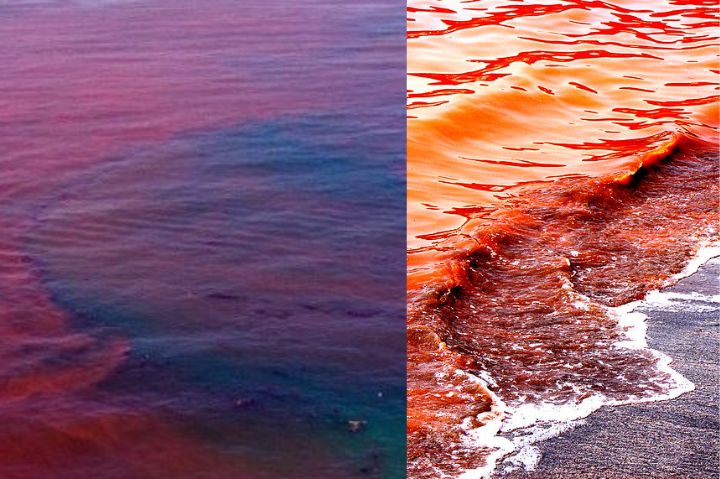Residents of Florida’s Gulf Coast are bracing for yet another environmental crisis as deadly ‘red tides’ threaten the area in the wake of back-to-back hurricanes. Recent water samples and satellite imagery have detected alarming levels of Karenia brevis, the algae responsible for these toxic blooms, just offshore of Tampa Bay.
Red tides occur when this type of algae proliferates uncontrollably, turning waters a sinister reddish-brown and releasing potent neurotoxins that can be harmful to both marine life and humans. As these toxins drift onshore, they pose severe respiratory risks, including shortness of breath, coughing, and sneezing. In extreme cases, exposure can escalate to serious respiratory conditions such as pneumonia and bronchitis, particularly for individuals with pre-existing respiratory issues.
The impact of red tides can be catastrophic; the toxins can cause paralytic shellfish poisoning (PSP), which is fatal in approximately 8.5% of cases. According to the National Centers for Coastal Ocean Science (NCCOS), the presence of Karenia brevis along the coasts of Pinellas and Sarasota counties has reached concentrations that could irritate the respiratory systems of beachgoers, especially when winds blow onshore.
Oceanographer Richard Stumpf of the National Oceanic and Atmospheric Administration (NOAA) compared the symptoms of red tide exposure to an “instant cold,” highlighting that while symptoms often dissipate quickly upon leaving the contaminated area, those with asthma or other respiratory conditions could face life-threatening complications.
In addition to the health hazards for humans and pets, red tides can devastate local marine ecosystems, leading to massive fish die-offs and leaving beaches littered with decomposing marine life. A striking example occurred in March 2023 when red tide conditions resulted in thousands of dead fish washing ashore along the Gulf Coast, prompting the cancellation of events like the annual BeachFest in Indian Rocks Beach.
This year’s red tide threat has been exacerbated by the recent passage of Hurricane Helene and Hurricane Milton. While hurricanes do not directly cause red tides, they can intensify existing blooms by stirring up nutrient-rich waters and increasing nutrient runoff from land due to heavy rainfall. Following Hurricane Helene’s landfall on September 26, the Florida Fish and Wildlife Commission reported concerning concentrations of Karenia brevis in coastal waters, a problem worsened by Hurricane Milton, which struck just two weeks later.
Florida is still recovering from the destruction wreaked by these hurricanes. Hurricane Helene brought record-breaking flooding of over 15 feet in some areas and winds reaching up to 140 mph, resulting in an estimated 20 fatalities and extensive property damage. Just weeks later, Hurricane Milton, a Category 3 storm, knocked out power for more than 3 million residents, delivered 18 inches of rain, and unleashed deadly tornadoes, causing at least 24 more deaths.
As Florida grapples with the aftermath of these catastrophic storms, the looming threat of red tide adds another layer of peril for residents and marine life alike. With health risks escalating and local ecosystems under siege, the situation calls for immediate attention and preparedness as communities navigate this unfolding environmental crisis.












